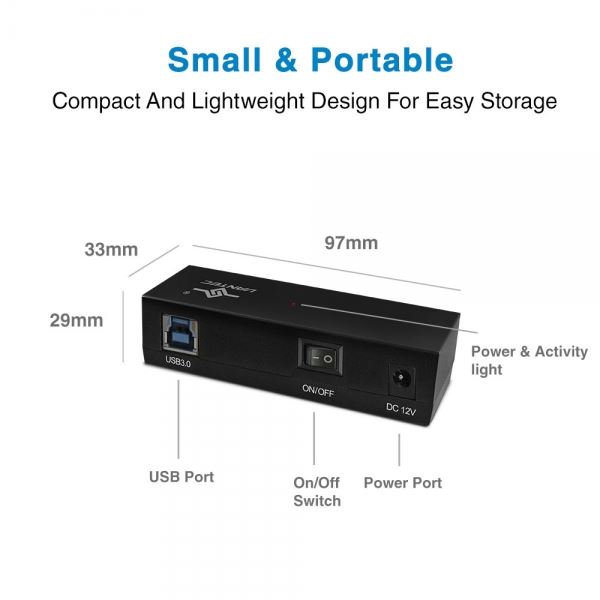The NexStar USB 3.0 to SATA 6Gbps Optical/Storage Adapter is a simple solution to connect any existing SATA 5.25” Optical drive to your USB port. Optical Drives like Blu-Ray, DVDRW, DVD ROM, CDRW and CD ROM are perfect companion with this adapter. It is as simple as connecting up the unit to the adapter, power it ON and you have access to your Optical drive. You can even use this adapter for any 2.5”/3.5” SATA SSD/HDD and it will run at screaming speed with UASP support. This Optical/Storage adapter is perfect for any bare SATA storage drives that you like to get it connected.
This is a perfect tool for quick Plug and Play, hot-swapped between drives without opening your case, “NDN” (No Drivers Needed), and it works with common OS like Windows/OS X/Linux. This compact and lightweight design makes for easy storage and portability.

Model: CB-ST00U3
Interface: USB 3.0
Supported Devices: SATA Blu-ray/DVDRW/DVD ROM/CDRW/CD ROM, SSDs, Hard Drives
HDD Capacity: Maximum capacity, Check www.vantecusa.com for the latest update on capacity
Drive Size: 5.25”, 3.5", and 2.5"
Power Supply: 12V, 2A AC Adapter **
Dimension: 3.9 x 1.0 x 1.7 in / 100 x 25 x 43 mm
Cable Length: 18 in /457 mm (Type A to Type B)
Weight: 3 oz / 85 g
** Note: If your Optical drive requires more power, you need a bigger ac adapter.
System Requirements:
Microsoft Windows 7/ 8.1/ 10
Mac OS X 10.6 and above
Linux OS
What's included: NexStar USB 3.0 to SATA 6Gbps Optical/Storage Adapter, USB cable, Power Adapter, Anti-slip Mat (for dampening drive noise), Quick installation Guide
UPC: 844767022703
EAN: 4716872103096